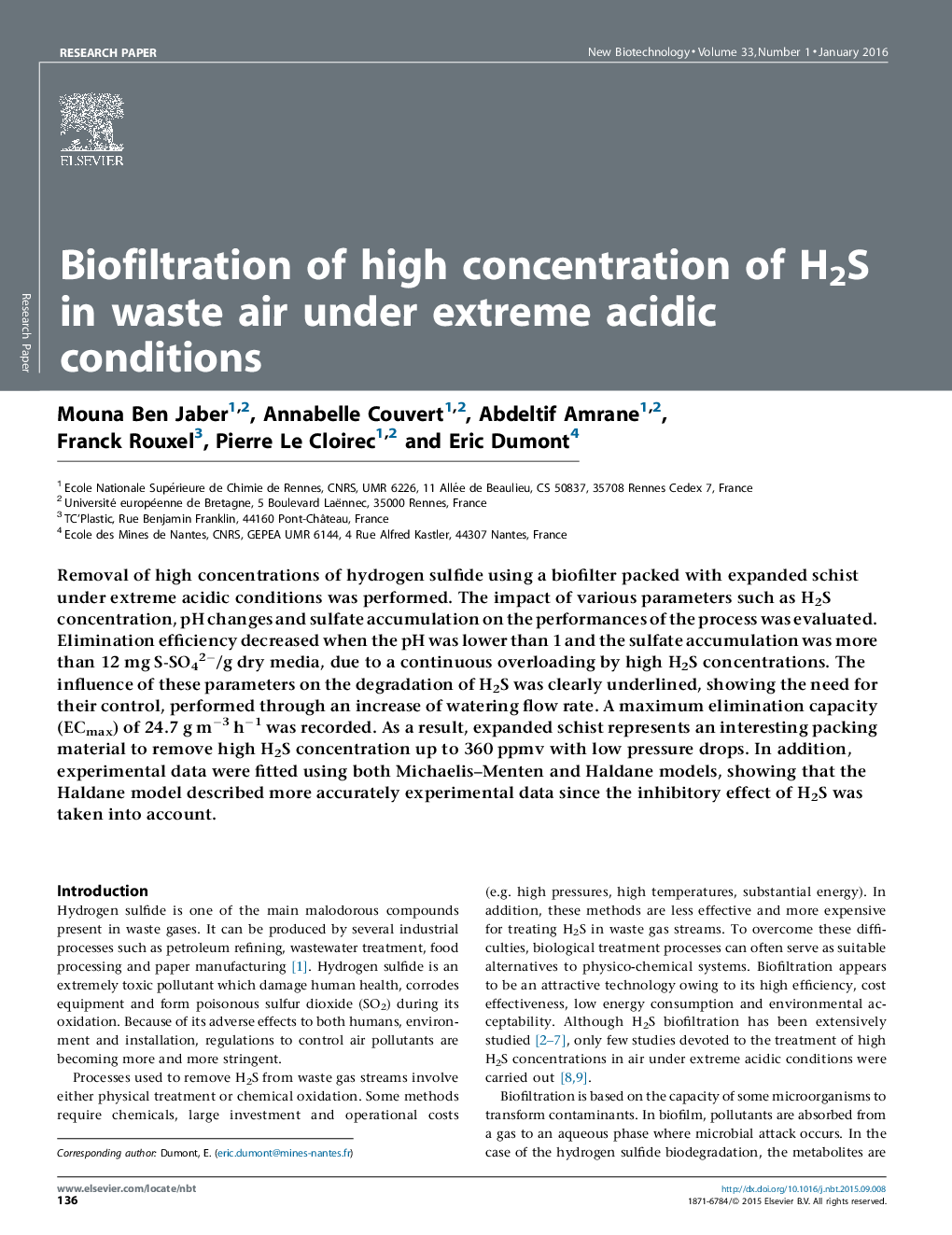| Article ID | Journal | Published Year | Pages | File Type |
|---|---|---|---|---|
| 33045 | New Biotechnology | 2016 | 8 Pages |
•H2S biofiltration was carried out under extreme acidic conditions.•Expanded schist topped with a nutritional material UP20 was used as packing material.•A maximum elimination capacity of 24.7 g m−3 h−1 was recorded (H2S up to 250 ppmv).•Watering was efficient to restrict acidification and improve biofilter performance.•Satisfactory H2S removal was achieved through the combination of schist and UP20.
Removal of high concentrations of hydrogen sulfide using a biofilter packed with expanded schist under extreme acidic conditions was performed. The impact of various parameters such as H2S concentration, pH changes and sulfate accumulation on the performances of the process was evaluated. Elimination efficiency decreased when the pH was lower than 1 and the sulfate accumulation was more than 12 mg S-SO42−/g dry media, due to a continuous overloading by high H2S concentrations. The influence of these parameters on the degradation of H2S was clearly underlined, showing the need for their control, performed through an increase of watering flow rate. A maximum elimination capacity (ECmax) of 24.7 g m−3 h−1 was recorded. As a result, expanded schist represents an interesting packing material to remove high H2S concentration up to 360 ppmv with low pressure drops. In addition, experimental data were fitted using both Michaelis–Menten and Haldane models, showing that the Haldane model described more accurately experimental data since the inhibitory effect of H2S was taken into account.
